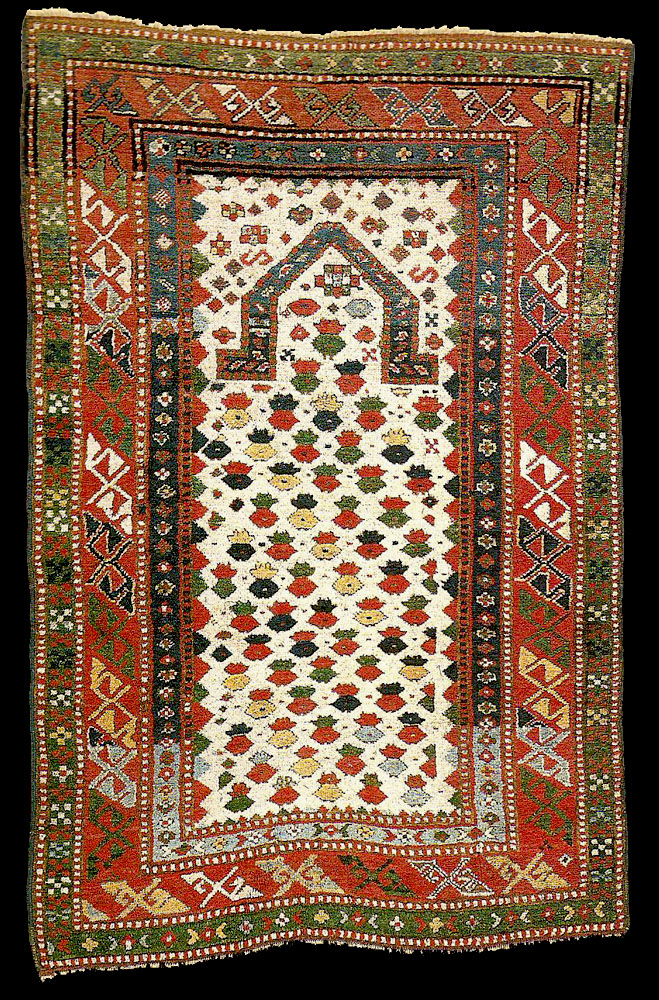|
A rare antique Kazak
Prayer rug, 1870-80s, 114x208cm, 3'9"x6'10", Azerbaijan
|
|
Designs travel. The borders, arch and floral field of this rug are
influenced by east Caucasian designs, but it is without doubt a Kazak, with
the red weft, full pile and hefty feel typical of that area. The red and
white minor guard stripe is also an indication of southwest Caucasian
origin. The field design is somewhat unusual in that it lacks a latticed
grid, and the almost mushroom-like depiction of the flowers is uncommon as
well. This could be a case of a weaver attempting to emulate a Shirvan pat-
tern without a clear understanding of the design, or it could simply be an
original design without specific antecedents. The rug has the clear colours
typical of Kazak weavings, including white, red, two blues, two greens,
yellow and light blue.
A very similar example, with an identical field and border system but with a
notched prayer arch and handprints in the spandrels, was sold to a leading
German dealer at Skinner's in 1986 (Skiiner 3 June 1986, lot 36). Another,
virtually identical, piece was offered at auction by Rippon in 1996. Other
white-ground examples, similar in design but with naturalistically drawn
flowers, have been assigned to the eastern Caucasus (for example lot 2169 in
catalogue for Rudolf Mangisch, Zurich, 18 March 1989 (Shirvan), pl.39 in
Cootner, Oriental Rugs, An Introduction: Prayer Rugs (Shirvan)).
published
Ralph Kaffel's Caucasian Prayer Rugs plate 16
 |

